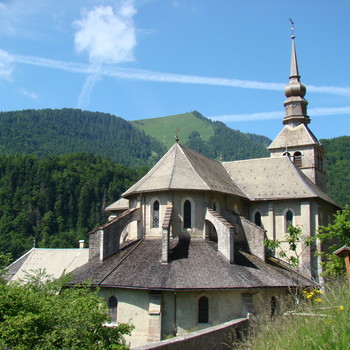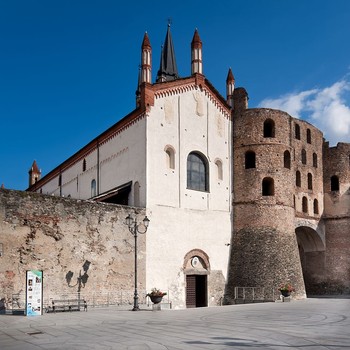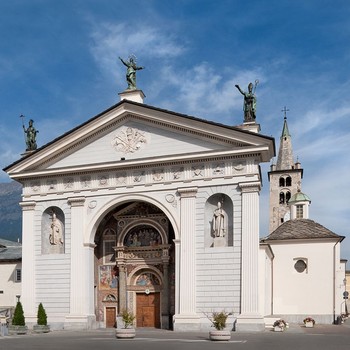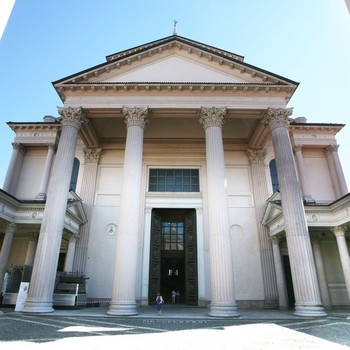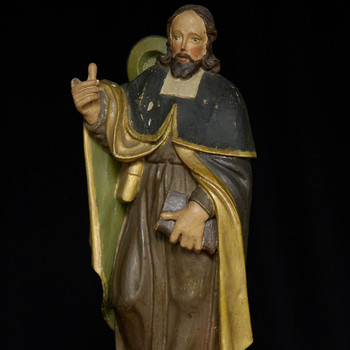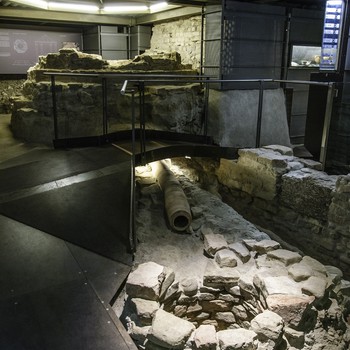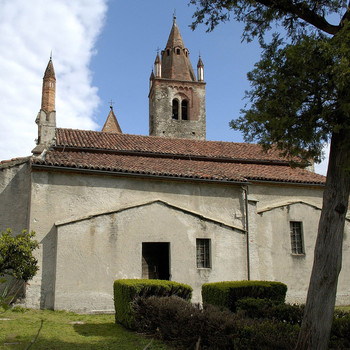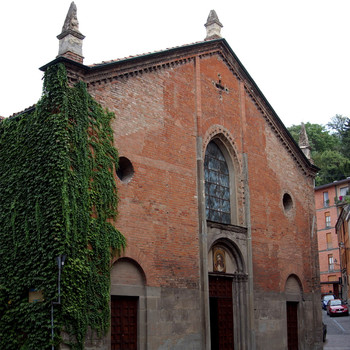Abbaye Notre-Dame
Diocesi di Susa ( sec. XII )
The abbey was founded in the 12th century in the department of Haute-Savoie. The 15th-century cloister contains frescoes depicting stories from the Life of the Virgin, painted by artists similar in style to Jaquerio, and a rich sculptural apparatus.
Cathedral of San Giusto
Diocesi di Susa ( sec. XI )
Cathedral of San Giusto, Diocese of Susa. Founded in 1027, it was a monastery until 1749, when it became a collegiate church, and then a cathedral in 1772. The building is in Romanesque style, with a Latin cross plan.
Cathedral of Santa Maria Assunta
Diocesi di Aosta ( sec. IV; XI; XIX )
Founded at the end of the 4th century, Aosta Cathedral was rebuilt seven centuries later. It was further modified by major refurbishments in the 15th–16th and 19th centuries.
Cathedral of Santa Maria Assunta
Diocesi di Novara ( sec. IV; XX )
Novara Cathedral is a complex building, whose 19th-century structure designed by Alessandro Antonelli features details from the Early Christian and Romanesque periods, while the interior houses a wealth of artworks.
Diocesan Museum System
Diocesi di Susa
Diocesan Museum System. Constituted by the network of ecclesiastic museums coordinated by the Diocesan Museum of Sacred Art of Susa, which collect together and display the religious artistic heritage of the Susa Valley.
Diocesan Museum of Alba
Diocesi di Alba
The Diocesan Museum (MUDI) offers visitors the opportunity to rediscover the area’s artistic and historical heritage.
Abbazia Benedettina dei Santi Pietro e Andrea
Diocesi di Susa ( sec. VIII )
L'atto di fondazione dell'abbazia benedettina risale al 726, diventa centro propulsore della diffusione dell'ordine benedettino a partire dal IX secolo con Benedetto d'Aniane. Con l'abate Eldrado la comunità attraversò un periodo di fioritura spirituale.
Sacra di San Michele
Diocesi di Susa ( sec. X; XII )
La Sacra di San Michele, fondata tra il 983 e il 987, fu uno dei più importanti centri della cultura monastica europea. È, inoltre, uno dei più importanti monumenti romanici a livello internazionale, simbolo, dal 1994, della Regione Piemonte.
Chiesa di San Pietro
Diocesi di Susa ( sec. XIII )
La chiesa, attestata già prima del 1158, fu sede di parrocchia fino al 1320. Conserva al suo interno una fitta e affascinante stratificazione di affreschi, datati tra l’XI e il XV secolo, con interventi di Giacomo Pitterio e dei fratelli Serra.
Chiesa di Santa Maria Canale
Diocesi di Tortona ( sec. XII )
La costruzione della chiesa di Santa Maria Canale risale al XII secolo, ma l’aspetto attuale è il risultato di alcuni rifacimenti d’epoche diverse.
Chiesa di San Maurizio
Diocesi di Mondovì ( sec. XI )
Conserva alcuni tra i più antichi affreschi piemontesi: un Cristo Pantocratore, gli Apostoli ed gli Evangelisti e curiose figure allegoriche.
Pieve Santa Maria di Bredolo
Diocesi di Mondovì ( sec. IX )
“Il più antico e il più bel monumento dell’estremo Medioevo che rimanga nelle nostre parti.” Emanuele Morozzo della Rocca.
Romanesque
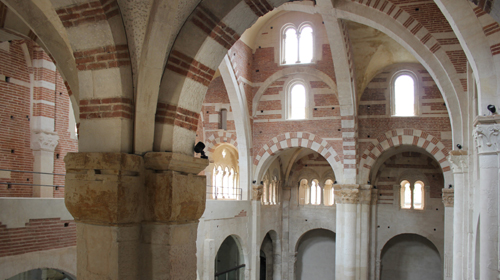
Significant expressions of Romanesque are to be found in Piedmont. Above all in architecture, this is the art that continued the great building traditions of Rome, following the depression of the Dark Ages. The buildings erected after 1000 still reveal hesitant engineering, with a static quality that emphasizes the walls while the openings allowing light to enter are sparse and small. The master masons, stonecutters and sculptors came from the lakes: the Campionesi from Lugano and the Comacini from Como. These craftsmen spread the language of the renaissance of the art of building. Lombardy led the way in Europe, with nearby Piedmont imitating pace and style, although the assertion of Romanesque was tardy, interspersed with Gothic style features. Important examples are Casale cathedral, Vezzolano abbey and the sturdy Consolata belfry.



